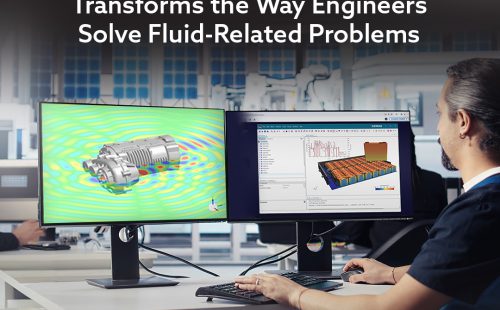🏎️💨 𝐃𝐨𝐰𝐧𝐟𝐨𝐫𝐜𝐞, 𝐃𝐢𝐫𝐭𝐲 𝐀𝐢𝐫, 𝐆𝐫𝐨𝐮𝐧𝐝 𝐄𝐟𝐟𝐞𝐜𝐭, 𝐃𝐑𝐒 — 𝐰𝐡𝐚𝐭 𝐝𝐨 𝐭𝐡𝐞𝐲 𝐦𝐞𝐚𝐧 𝐢𝐧 𝐅𝐨𝐫𝐦𝐮𝐥𝐚 𝟏 🤔❓
After watching 𝐅𝟏® 𝐓𝐡𝐞 𝐌𝐨𝐯𝐢𝐞 in theaters, many of you might be wondering about the technical terms you’ve heard repeatedly. What do these terms mean, and why do they matter to us as engineers?
Today, let’s break them down in a simple and nerdy engineering style!
🏎️ Formula 1 cars are the pinnacle of automotive engineering—especially when it comes to aerodynamics, which plays a critical role in determining whether a car can beat its rivals. Even with a powerful engine, ❗️ if the airflow isn’t optimized, the car can easily lose out to a competitor with superior aero design.
🔻 𝐃𝐨𝐰𝐧𝐟𝐨𝐫𝐜𝐞 – More grip and traction
Downforce is the force that pushes the car toward the ground, helping it stay on track at a corner. It’s created through aerodynamic components such as the front wing, rear wing, diffuser, and the car’s floor.
This force allows cars to corner faster, brake more effectively, and accelerate turns without losing grip.
💡 From an engineering perspective, it’s the principle of negative lift—the same physics as an airplane wing, but reversed. Instead of lifting up, we want the force to push the car down.
Factors Affecting Downforce – Wing Angle of Attack
🪽 Increasing the angle of attack increases downforce, but also drag. If the angle is too steep, airflow can separate from the surface, reducing downforce.
🪽 Engineers must balance between downforce and drag to suit the track and car setup.
🌪️ 𝐃𝐢𝐫𝐭𝐲 𝐀𝐢𝐫 – The Turbulence You Don’t Want
Dirty Air refers to the disturbed airflow coming from the car in front. When following closely, the trailing car receives air that is less stable and smooth.
➡️ This reduces the aerodynamic performance of critical components like the front and rear wings, decreasing downforce and making cornering harder.
➡️ That’s why F1 cars often keep some distance or seek alternative lines to minimize dirty air when chasing competitors.
But dirty air doesn’t only come from other cars—it can come from your own! Air passing over the front wing and front tires creates vortices that can hit the floor, side-pods, or rear wing.
❌ If not managed properly, this turbulence can degrade the performance of these parts.
🌏 𝐆𝐫𝐨𝐮𝐧𝐝 𝐄𝐟𝐟𝐞𝐜𝐭 – The Power of the Floor
Modern F1 cars utilize Ground Effect by designing special tunnels under the car’s floor.
💨 As air flows beneath the car, it accelerates and reduces pressure (thanks to Bernoulli’s principle), creating a suction effect that pulls the car toward the track.
📌 The big advantage? It generates massive downforce with less drag compared to wings, improving speed on both straights and corners.
🪂 𝐃𝐑𝐒 – Gain more speed
DRS (Drag Reduction System) is a mechanism that reduces aerodynamic drag during overtaking. It works by opening the rear wing flap to allow smoother airflow.
When activated, downforce decreases, but the car gains higher top speed—ideal for straights when chasing or overtaking.
🧠 𝐖𝐡𝐲 𝐃𝐨𝐞𝐬 𝐓𝐡𝐢𝐬 𝐌𝐚𝐭𝐭𝐞𝐫 𝐟𝐨𝐫 𝐄𝐧𝐠𝐢𝐧𝐞𝐞𝐫𝐬?
In F1, every degree of wing angle and every surface contour can determine victory or defeat.
For engineers—whether in automotive or aerospace—these concepts are real-world lessons in applying physics outside the classroom. Aerodynamics isn’t just for race cars; it’s everywhere, especially in the automotive industry where we design components that influence airflow.
We apply these principles to:
- Reduce drag for better efficiency
- Improve stability for safety
- Minimize wind noise for comfort
- Extend fuel economy or EV battery range
Even if we’re not building F1 cars, everyday vehicle design benefits from aerodynamic principles.
Discover more about our solution
📍 For more information or to schedule an appointment, please contact us
🧑🏻💻 Written and Analyzed by:
Nithikit Thanateerarangsan
Manufacturing Dept. Team Leader
Expert and certified CAE solution trainer with experience in UAV aerodynamic simulation (CFD), portable credit card mechanism analysis, heat-related failure analysis of outdoor AC units, pressure loss analysis in air ducts, and more.
Connect Author’s LinkedIn : www.linkedin.com/in/nithikitt






